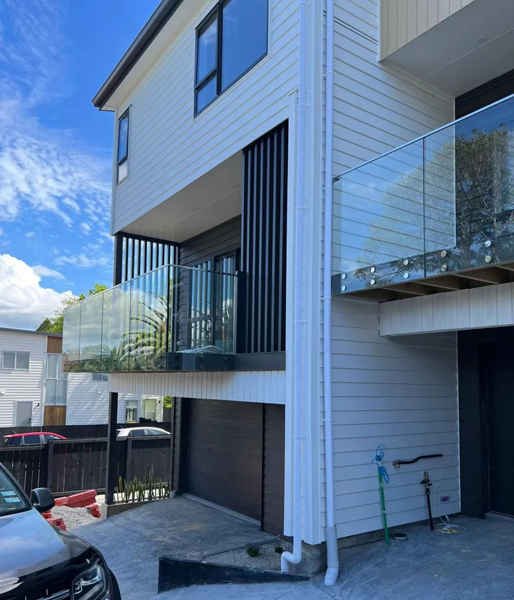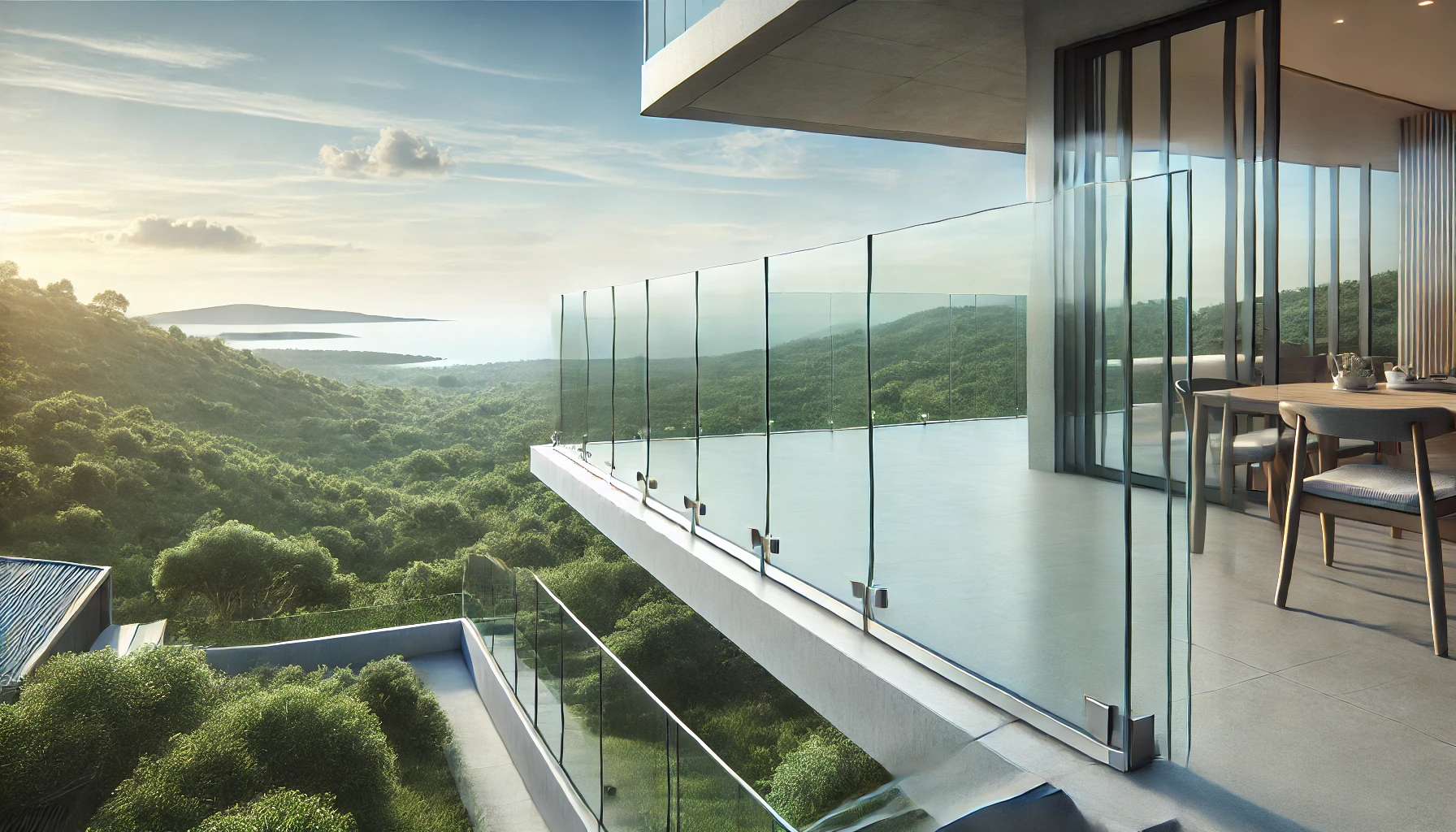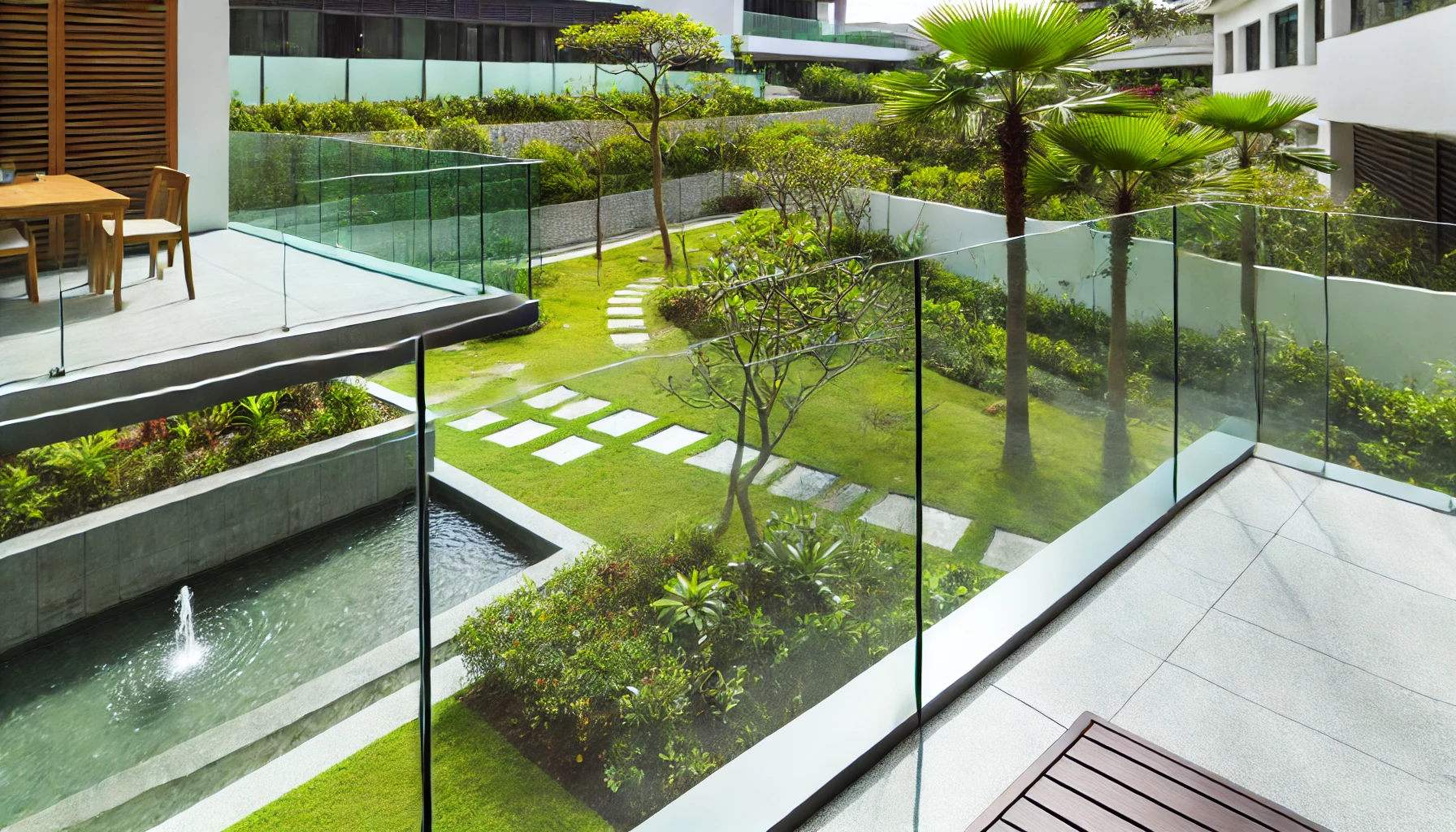Introduction
Glass railings have become a sought-after feature in modern architecture due to their sleek design and ability to enhance the aesthetic appeal of any space. However, achieving the perfect look and functionality often requires a customized approach. Customizing glass railings involves several key steps, including precise measurement, design selection, color coordination, and material choice. This article will guide you through the customization process, helping you understand how to realize your vision and ensure that the final product meets your exact needs.
1. Understanding the Importance of Customization
Customization allows you to create glass railings that are not only functional but also reflect your personal style and the specific requirements of your space. Whether you are working on a residential project, a commercial building, or an outdoor space, customized glass railings offer the flexibility to match the architectural style, enhance safety, and provide the exact look you desire.
- Personalization: Custom glass railings can be tailored to your personal preferences, whether you prefer a minimalist design, ornate details, or a specific color scheme.
- Functionality: By customizing, you can ensure that the railings fit perfectly within the dimensions and layout of your space, avoiding common issues like misalignment or inadequate support.
- Compliance: Customization also allows you to adhere to local building codes and regulations, ensuring that the railings meet all necessary safety standards.
2. The Customization Process
a) Initial Consultation and Site Assessment
The first step in customizing glass railings is to conduct an initial consultation and site assessment. This involves working with a professional who can understand your vision, assess the site, and provide expert advice on the best options available.
- Discussing Your Vision: During the consultation, you will discuss your ideas, preferences, and requirements. This includes the design style you are aiming for, the intended use of the space, and any specific safety or privacy concerns.
- Site Measurement: Accurate measurements of the installation site are critical. A professional will visit the location to take precise measurements, considering factors like the slope of stairs, the curvature of balconies, or the height of pool enclosures. These measurements will form the basis for the design and fabrication process.
b) Design Selection and Material Choice
Once the site assessment is complete, the next step is to choose the design and materials for your glass railings. This is where your vision begins to take shape, with numerous options to consider.
- Design Options: Glass railings can be customized in various designs, from frameless systems that offer a clean, uninterrupted view to fully framed railings that provide additional structural support. Consider the architectural style of your property and how the railing design will complement it.
- Frameless Railings: Ideal for a modern, minimalist look, these railings use high-strength glass panels and minimal hardware.
- Framed Railings: Suitable for traditional or industrial designs, framed railings can be customized with different finishes and materials for the posts and handrails.
- Glass Type: Choose between different types of glass, such as tempered glass for safety, laminated glass for additional security, or tinted glass for privacy. The choice of glass will depend on the specific needs of your project.
- Material and Finish: The posts, handrails, and other components can be made from various materials, including stainless steel, aluminum, or wood. Each material can be finished in different ways, such as brushed, polished, or powder-coated, to match the desired aesthetic.
c) Color Coordination
Color coordination is an essential part of the customization process, as it determines how well the glass railings will blend with the surrounding environment.
- Glass Tinting: Glass panels can be tinted in various colors to achieve the desired look. Whether you want a subtle gray tint for a sleek appearance or a bronze tint to match warm tones in your décor, there are numerous options available.
- Frame and Post Colors: The color of the frames, posts, and handrails can also be customized. Consider coordinating these colors with other elements in your space, such as window frames, flooring, or exterior siding.
- Finish Selection: In addition to color, the finish of the materials can influence the overall appearance. A matte finish might be preferred for a subdued look, while a glossy finish can add a touch of luxury.
d) Fabrication and Production
After finalizing the design and material choices, the fabrication process begins. This step involves the production of custom glass panels and metal components according to the specifications agreed upon during the design phase.
- Precision Cutting: The glass panels are cut to the exact measurements taken during the site assessment. Advanced machinery ensures that each piece is cut with precision, minimizing the risk of errors.
- Edge Finishing: The edges of the glass panels are finished to remove sharpness and create a smooth, polished appearance. This is particularly important for safety, especially in frameless designs.
- Assembly: The metal components, such as posts and handrails, are fabricated and finished according to the design specifications. These components are then assembled with the glass panels, ensuring a seamless fit.
e) Installation
The installation process is the final step in the customization journey, and it is crucial to achieving a flawless result. Professional installation is highly recommended to ensure that the railings are securely and correctly installed.
- On-Site Preparation: The installation team will prepare the site, which may involve clearing the area, reinforcing structures, or setting up scaffolding if necessary.
- Mounting: The glass panels and metal components are carefully mounted according to the design plan. This step requires precision to ensure that the railings are level, secure, and aligned correctly.
- Final Inspection: After installation, a final inspection is conducted to ensure that the railings meet all safety and aesthetic standards. Any adjustments needed are made at this stage to ensure a perfect fit.
3. Ensuring Quality and Satisfaction
a) Working with Reputable Suppliers
To ensure that your custom glass railings meet your expectations, it is essential to work with a reputable supplier who has experience in producing high-quality custom products.
- Experience and Expertise: Choose a supplier with a proven track record in designing and fabricating custom glass railings. They should have the necessary expertise to handle complex designs and challenging installations.
- Quality Assurance: Ensure that the supplier adheres to strict quality control processes during fabrication and installation. This includes using high-grade materials, precision cutting, and thorough inspections.
b) Communication and Collaboration
Effective communication throughout the customization process is key to achieving the desired outcome. Regular updates and clear communication between you, the designer, and the installation team will help prevent misunderstandings and ensure that the project stays on track.
- Design Revisions: Be open to revisions during the design phase. Sometimes, adjustments may be necessary to better suit the site conditions or to enhance the overall design.
- Feedback Loop: Provide feedback at each stage of the process, from initial consultation to final installation. This will help ensure that the final product aligns with your vision.
c) Post-Installation Support
Once the installation is complete, ongoing support is important to maintain the appearance and functionality of your glass railings.
- Maintenance Guidance: Request maintenance guidelines from your supplier to keep your railings in top condition. Regular cleaning and inspections will help extend the lifespan of the railings and prevent issues such as loosening or corrosion.
- Warranty and Service: Check the warranty offered by the supplier and understand what it covers. Some suppliers may also offer post-installation services, such as repairs or adjustments, to ensure long-term satisfaction.
Conclusion
Customizing glass railings allows you to create a product that perfectly fits your space, meets your functional needs, and reflects your personal style. By following a structured customization process—from initial consultation and design selection to fabrication and installation—you can achieve a flawless result that enhances the beauty and safety of your property. Working with experienced professionals and maintaining open communication throughout the project are key to ensuring that your custom glass railings meet your expectations and provide lasting value.







